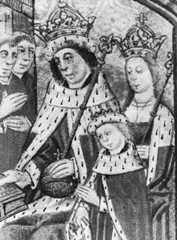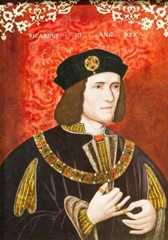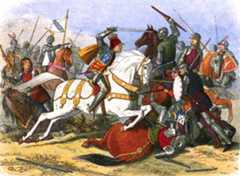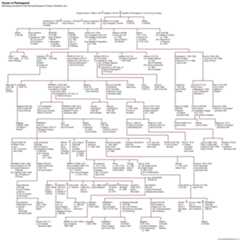house of York
Our editors will review what you’ve submitted and determine whether to revise the article.
house of York, younger branch of the house ofPlantagenet ofEngland. In the 15th century, having overthrown the house ofLancaster, it provided three kings of England—Edward IV,Edward V, andRichard III—and, in turn defeated, passed on its claims to theTudor dynasty.
The house was founded by KingEdward III’s fifth son,Edmund of Langley (1341–1402), 1st Duke ofYork, but Edmund and his own son, Edward, 2nd Duke of York, had for the most part undistinguished careers. Edward, dying childless, passed on the dukedom to his nephew Richard (whose mother was adescendant of Edward III’s second surviving son,Lionel, Duke of Clarence).Richard, 3rd Duke of York (1411–60), was the initial Yorkist claimant to the crown, in opposition to the LancastrianHenry VI. It may be said that his claim, when it was advanced, was rightly barred by prescription, thehouse of Lancaster having then occupied the throne for three generations, and that it was really owing to the misgovernment of QueenMargaret of Anjou and her favourites that it was advanced at all. Yet it was founded upon strict principles of lineal descent, for the 3rd Duke of York was descended from Lionel, Duke of Clarence, the second surviving son of Edward III, whereas the house of Lancaster came ofJohn of Gaunt, a younger brother of Lionel. One thing that might possibly have been considered an element of weakness in Richard’s claim was that it was derived through females—an objection actually brought against it by ChiefJusticeJohn Fortescue (probably a reflection of the increasingly common practice among the Englishnobility of passing on their estates to a male heir). But apart from strict legality, Richard’s claim was probably supported in the popular view by the fact that he was descended from Edward III through his father no less than through his mother.
After seeking for many years to correct the weakness of Henry VI’s government, Richard first took up arms and at length claimed the crown inParliament as his right. The Lords, or those who did not purposely stay away from the House, admitted that his claim was unimpeachable but suggested as a compromise that Henry should retain the crown for life and that Richard and his heirs succeed after his death. This was accepted by Richard, and an act to that effect received Henry’s own assent. But the act wasrepudiated by Margaret of Anjou and her followers, and Richard was slain atWakefield fighting against them. In little more than two months, however, his son was proclaimed king atLondon by the title ofEdward IV, and the bloody victory in theBattle of Towton immediately after drove his enemies into exile and paved the way for his coronation.
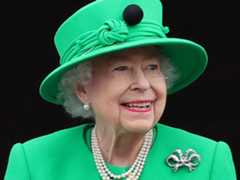
After his recovery of the throne in 1471, Edward IV had little more to fear from the rivalry of the house of Lancaster. But the seeds of distrust had already been sown among the members of his ownfamily, and in 1478 his brother Clarence was put to death—secretly, indeed, within theTower of London, but still by his authority and that of Parliament—as a traitor. In 1483 Edward himself died; and his eldest son, Edward V, after anominal reign of two months and a half, was put aside by his uncle, the Duke of Gloucester, who became Richard III, and then, it is said, caused him and his brother Richard, Duke of York, to be murdered. But in little more than two years Richard was slain atBosworth Field by the TudorEarl of Richmond, who, being proclaimed king asHenry VII, shortly afterwards fulfilled his pledge to marry the eldest daughter of Edward IV and so unite the houses of York and Lancaster.
Here the dynastic history of the house of York ends, for its claims were henceforth merged in those of the house of Tudor.

